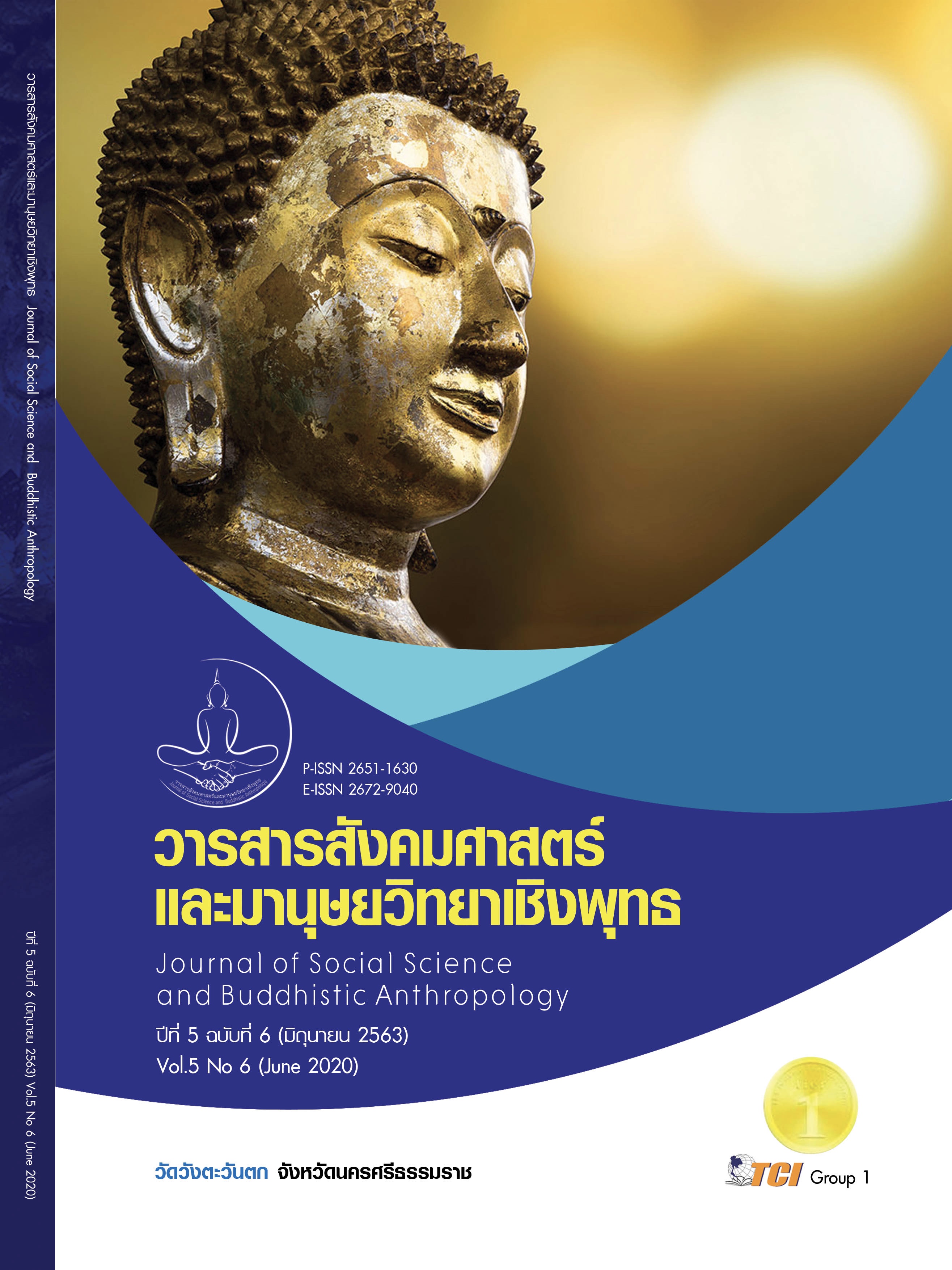DEVELOPMENT OF A MODEL IN CREATING HAPPINESS AT WORK OF ADMINISTRATORS AND TEACHERS IN SCHOOLS UNDER THE SURATTHANI PRIMARY EDUCATIONAL SERVICE AREA OFFICE 2
Keywords:
Model Development, Organization of Happiness, Creating Happiness at WorkAbstract
This article has the objectives of 1) to study the happiness in working conditions and 2) to develop the model of creating happiness at work of administrators and teachers in educational institutions. Under the Surat Thani Educational Service Area Office, Area 2, is a research and development with the following steps: Step 1 Synthesis of concepts, theories and related research To set the framework for studying the conditions of working happiness After that, it will be used as an issue for interview questions. And the quality check of the tools by 5 experts. The interviewees were 11 school administrators using specific selection methods. Data was analyzed using content analysis. Step 2 Develop a model for creating work happiness. Bring the research results from step 1 to be drafted as a model for creating work happiness. After that, the draft was raised for 14 experts to examine the suitability and possibility. By using small group discussion techniques And synthesize the data according to the seminar's issues using inductive analysis. The results of the research revealed that 1) The happiness in working condition of administrators and teachers in educational institutions There are 5 important components which are Contact Love in the job On job success Accepted aspects And job satisfaction. 2) Development of ways to create happiness in the workplace of administrators and teachers in educational institutions, consisting of 2.1) principles and rationale 2.2) objectives 2.3) goals, patterns 2.4) elements of the model There are 5 important components in 66 indicators: 2.4.1) Contact relationships with 11 indicators 2.4.2) Love in work has 12 indicators 2.4.3) There are 13 success stories in work. 2.4.4) Acceptance, there are 17 indicators 2.4.5) Job satisfaction with 13 indicators 2.5) Management to support creating happiness at work 2.6) Success conditions.
References
จันทร์ตรี แย้มเดช และปริญญา หรุ่นโพธิ์. (2561). การให้ความหมายและการสร้างความสุขในการปฏิบัติงานของพนักงานสายปฏิบัติการ มหาวิทยาลัยของรัฐบาลแห่งหนึ่งในพื้นที่เขตปริมณฑล. วารสารวิชาการ Veridian E –Journal,Silpakorn University ฉบับภาษาไทย สาขามนุษยศาสตร์ สังคมศาสตร์ และศิลปะ, 11(3), 3540-3555.
ดวงเนตร ธรรมกุล. (2555). การสร้างสุขภาวะในองค์กร. วารสารวิจัยทางวิทยาศาสตร์สุขภาพ, 6(1), 1-10.
พเยาว์ หมอเล็ก. (2560). ขวัญกำลังใจในการปฏิบัติงานของครูสังกัดองค์กรปกครองส่วนท้องถิ่นอําเภอเมือง จังหวัดยะลา. ใน สารนิพนธ์ครุศาสตรมหาบัณฑิต สาขาวิชาการบริหารการศึกษา. มหาวิทยาลัยราชภัฏยะลา.
พิมพันธ์ เดชะคุปต์ และพเยาว์ ยินดีสุข. (2558). การจัดการเรียนรู้แนวในทศวรรษที่ 21. กรุงเทพมหานคร: จุฬาลงกรณ์มหาวิทยาลัย.
ภัทรดนัย ฉลองบุญ. (2556). ความสุขในการปฏิบัติงานของบุคลากรภาครัฐ. วารสารสันติศึกษาปริทรรศน์มจร, 6(ฉบับพิเศษ), 591-599.
รัตนะ บัวสนธ์ และคณะ. (2555). วิทยฐานะของวิชาชีพครู: หนทางส่งเสริมหรือทำลายการศึกษาไทย. วารสารศึกษาศาสตร์ มหาวิทยาลัยนเรศวร, 14(3), 35-47.
ว.วชิรเมธี. (2556). ความสุขในกำมือ. นนทบุรี: ปราณ.
ศิรินันท์ กิตติสุข และคณะ. (2555). คู่มือการวัดความสุขด้วยตนเอง HAPPINOMETER. นครปฐม: สถาบันวิจัยประชากรและสังคมมหาวิทยาลัยมหิดล.
สำนักงานกองทุนสนับสนุนการสร้างเสริมสุขภาพ. (2552). คู่มือมาสร้างองค์กรแห่งความสุขกันเถอะ. กรุงเทพมหานคร: สำนักงานกองทุนสนับสนุนการสร้างเสริมสุขภาพ.
อัชฌา ชื่นบุญ และคณะ. (2556). ปัจจัยที่ส่งผลต่อความสุขในการทำงานของบุคลากรในโรงพยาบาลเซนต์เมรี่. วารสารปัญญาภิวัฒน์, 4(2556), 73-85.








